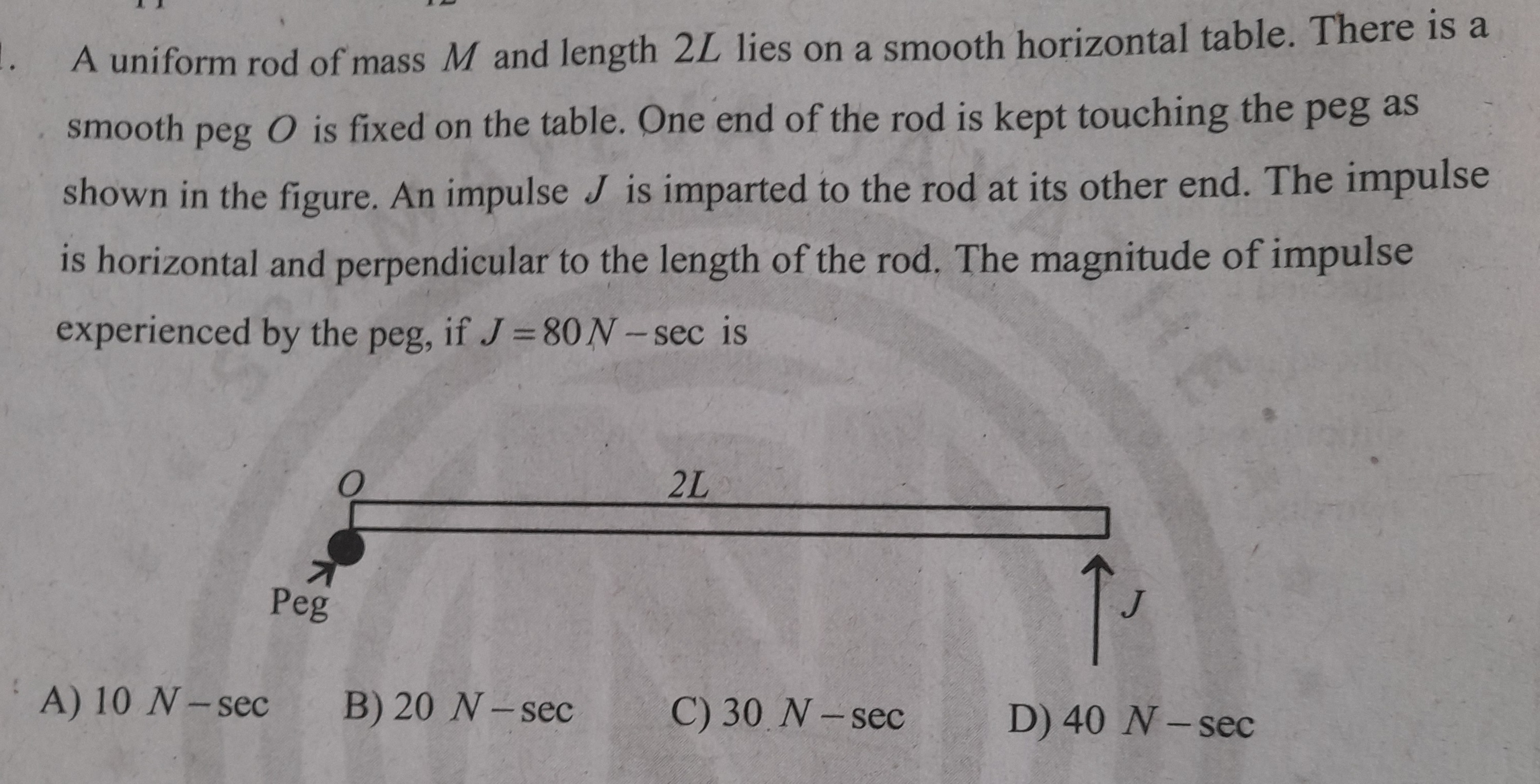Question
Question: A uniform rod of mass $M$ and length $2L$ lies on a smooth horizontal table. There is a smooth peg $...
A uniform rod of mass M and length 2L lies on a smooth horizontal table. There is a smooth peg O is fixed on the table. One end of the rod is kept touching the peg as shown in the figure. An impulse J is imparted to the rod at its other end. The impulse is horizontal and perpendicular to the length of the rod. The magnitude of impulse experienced by the peg, if J=80 N-sec is

10 N-sec
20 N-sec
30 N-sec
40 N-sec
40 N-sec
Solution
Let the rod have mass M and length 2L. The rod is pivoted at one end O. An impulse J is applied at the other end, perpendicular to the rod. Let the impulse from the peg on the rod be Jpeg.
We apply the angular impulse-angular momentum theorem about the pivot point O. The moment of inertia of a uniform rod of mass M and length 2L about one end is IO=31M(2L)2=34ML2. The impulse J is applied at a distance 2L from the pivot. The angular impulse due to J about O is (2L)J. The impulse Jpeg is applied at the pivot O, so its lever arm is zero, and it contributes no angular impulse about O. The initial angular momentum about O is zero. Let ω be the angular velocity of the rod after the impulse. The final angular momentum about O is IOω. Thus, by the angular impulse-angular momentum theorem: (2L)J=IOω (2L)J=34ML2ω ω=34ML22LJ=2ML3J
Now, we apply the linear impulse-momentum theorem to the center of mass (CM) of the rod. The CM of the rod is at a distance L from the pivot O. The velocity of the CM is vCM=ω×L=ωL. vCM=(2ML3J)L=2M3J
The total impulse acting on the rod is the sum of the applied impulse J and the impulse from the peg Jpeg. This total impulse equals the change in linear momentum of the rod. J+Jpeg=MvCM Substituting the expression for vCM: J+Jpeg=M(2M3J) J+Jpeg=23J Jpeg=23J−J=21J
The magnitude of the impulse experienced by the peg is ∣Jpeg∣=21J. Given J=80 N-sec, ∣Jpeg∣=21(80 N-sec)=40 N-sec.
